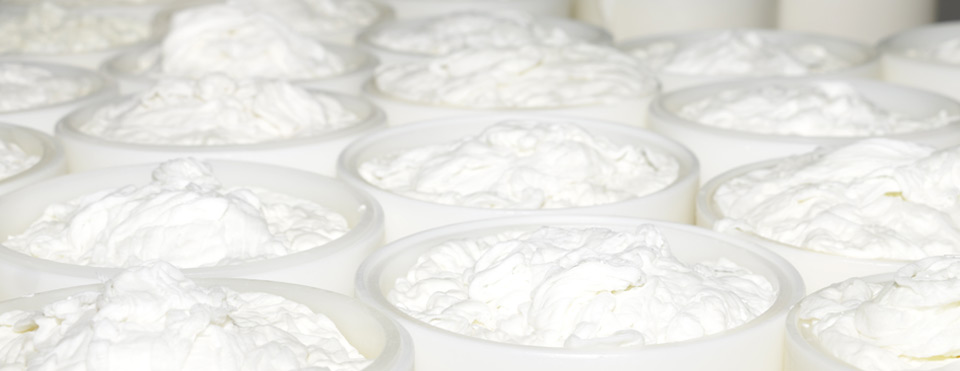Handcrafted production for our Villajos cheeses with P.D.O. and pasteurized production for our Villegas cheeses



Our cheese factory is based in our facilities in Porzuna (Ciudad Real), where we have all the necessary means to produce the handcrafted Villajos cheese with denomination of origin.
Manchego sheep’s milk is the main ingredient of our Manchego cheeses. The milk comes from the autochthonous cattle, that lives in a privileged environment to raise and give us this precious ingredient.
About the Manchego sheep
The Manchego sheep has been producing milk with special characteristics from distant times. It was not by chance that it gives us an ingredient with so much tradition as the Manchego cheese has. Over the centuries, the selection of the best cattle has borne us this precious fruit. In order to recall how this improvement and the results achieved, we’d like to stress these three aspects:
- ORIGIN: The Manchego sheep comes from the Ovis Aries Ligeriensis, which was its predecessor. This type of sheep crossed the Pyrenees, Aragon and Castille and Leon, until it settled in the region of La Mancha. From that moment on, the Manchego sheep stopped moving from one place to another in order to benefit from the climate and fodder resources from La Mancha. It gave up the transhumance and became a race of sedentary character.
- OUR ANCESTORS: The old settlers, those first Manchego who lived in the region of La Mancha, domesticated the Manchego sheep and improved the race because they didn’t allow it to cross with other sheep and that way they kept its purity and original qualities and therefore it characteristics remained unaltered over the centuries.
- NOWADAYS: The Manchego sheep is tended all year long and it benefits from the natural resources from La Mancha region.
Types of Manchego sheep
Regarding the varieties, we differentiate between two types of Manchego sheep according to its colour. Nevertheless, the variety does not determine the quality of the milk they produce:
- WHITE: the largest type. They have depigmented mucus.
- BLACK: with white spots on their heads and distal parts of their anatomy.
Manchego cheese properties
From the Manchego cheese we can stress its high proteins and A, D and E vitamins content, which are crucial for metabolic processes like the growth, the tissues preservation and the absorption of calcium and that’s why it is recommended food for every age:
- GROWTH STAGE: because of its high calcium content.
- ADULTHOOD: because of the high protein content.
- ELDERLY: it helps avoid calcium deficiency.
Analytic characteristics of the sheep’s milk
The sheep’s milk analytic characteristics are:
- Fat content: Minimum 6.5%
- Protein: Minimum 4.5%
- Dry extract suitable for use: Minimum 11%
- pH: 6, 5-7.
- Cryoscopy point: ≤ at -0,550 ºC.
- Absence of medicinal products.
Physical characteristics of the Manchego cheese
The Manchego cheese is a full fat cheese with the following physical characteristics:
- Shape: Cylindrical shape with flat faces.
- Maximum height: 12 cm
- Maximum diameter: 22 cm
- The ratio of diameter to height is 1.5 to 2.20.
- Minimum weight: 0.4 Kg
- Maximum weight: 4.0 Kg
Physico-chemical and microbiological characteristics of the Manchego cheese
The Manchego cheese has the following physico-chemical and microbiological characteristics:
- pH: 4.8 to 5.8.
- Dry extract: minimum 55%.
- Fat: minimum of 50% of the dry extract.
- Total protein of the dry extract: minimum 30%.
- Sodium chloride: maximum 2.3%.
- Absence of milk from other animal species.
- Escherichia coli: Maximum 1,000 colonies per gram.
- Staphylococcus aureus: Maximum 100 colonies per gram.
- Salmonella: Absence in 25 grammes.
- Lysteria: Absence in 25 grammes.
Organoleptic characteristics of the Manchego cheese
The organoleptic characteristics of the Manchego cheese are:
- RIND: with a hard consistency, free of parasites, a colour where the soft yellow or the dark green are the predominant ones, as long as the mould has been removed from the surface during the ripening process. Its aspect enables to see the imprint of the mould, with the shape of an esparto on the side faces and with the shape of a flower on the flat faces.
- PASTE: it has a firm and compact consistency, with a colour which varies from white to ivory yellow. It smells like milk intensely acid. The smell changes to a spicier one when talking about more cured cheeses. Its smell perseveres for a long time. Its taste is slightly acid, strong and tasty. It also turns into a more hot one in the case of much cured cheeses. It gives a nice and particular after-taste taken from the Manchego sheep’s milk. Its surfaces have irregularly located holes, which sometimes may not exist. Its texture has a low elasticity, with a greasy and floury sensation, which may also be granular in the case of the most cured cheeses.


